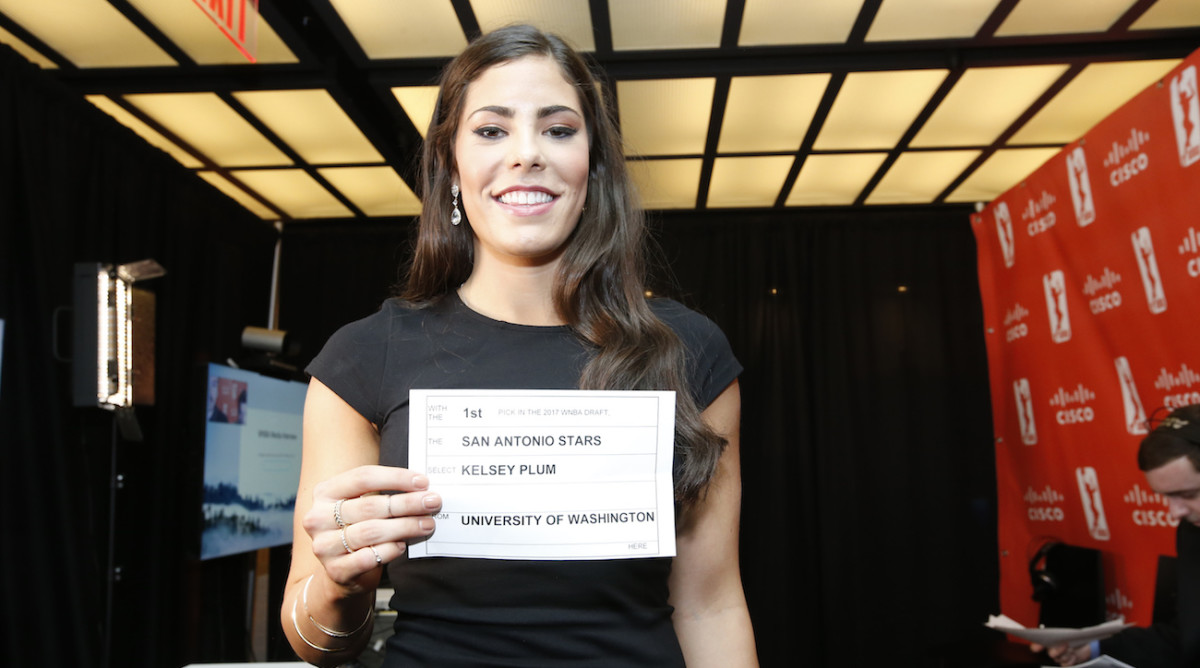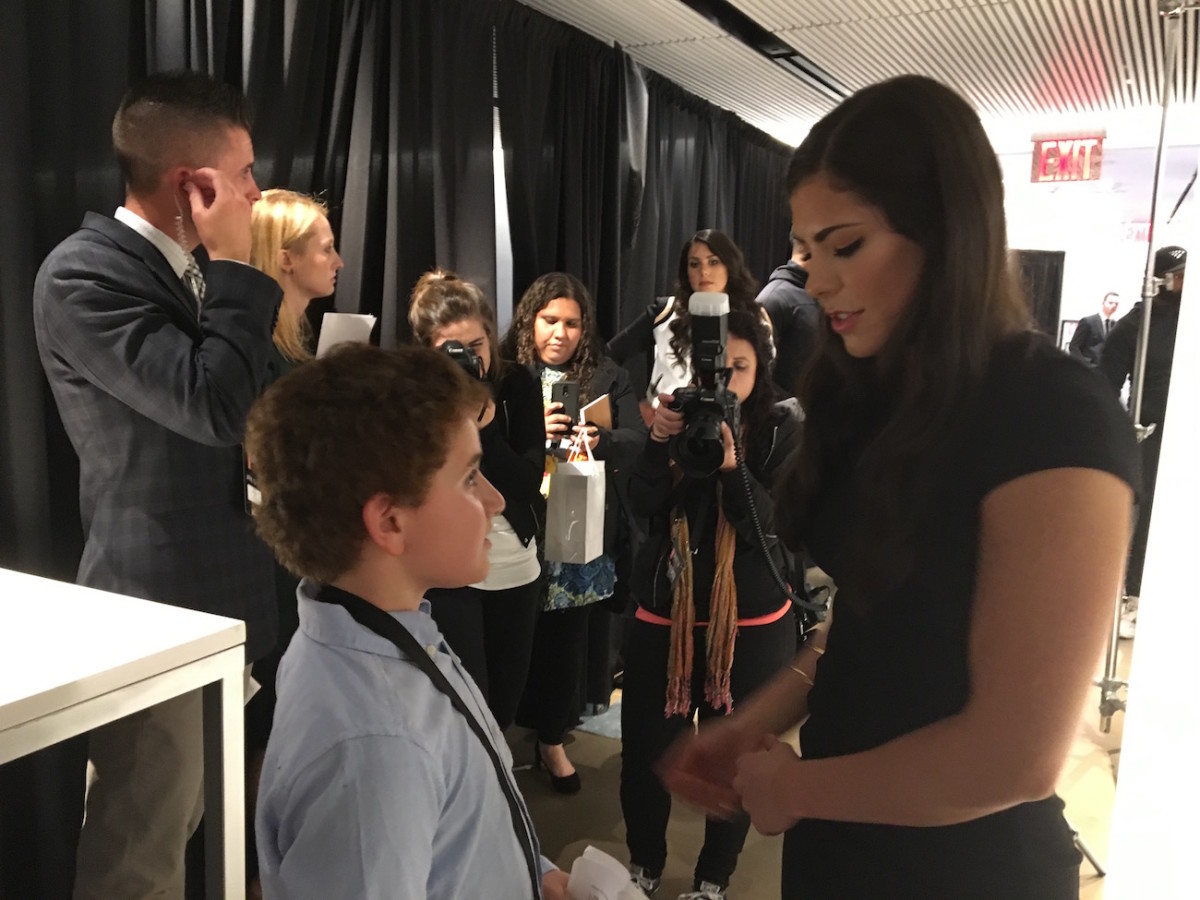Plum Choice: Washington Star Kelsey Plum Goes First in WNBA Draft


On Thursday night, the WNBA held its annual draft in New York City, where the teams selected from the best college players in the country. As expected, Kelsey Plum, a guard from the University of Washington who holds the record for most points scored in college history, went No. 1 overall, to the San Antonio Stars.
Connecticut Sun forward Chiney Ogwumike, who had gone through the experience of being a first pick in 2014, said Kelsey Plum is a “true scorer” and “an excellent player.” Imani Boyette, a WNBA rookie who was drafted 10th last year, said, “Everyone knew Kelsey was going to go No. 1.”
Unlike other drafts, the WNBA draft was like a party. There was music playing, food and drinks, and the players and their families were walking around the whole building. There was a three-story screen along one entire wall that kept everyone updated on who was picked by each team.
Every three minutes, another player was selected. The 10 players who were at the draft waited for their names to be called while sitting at tables with their families. When their name was picked, all the cameras turned toward them, and they hugged their families.
Boyette described the experience: “I was so nervous. My parents were really nervous. They made it worse. It’s three minutes between each pick, but it feels like an hour. It’s crazy out there. Once I got picked I was really excited.”
The University of South Carolina Gamecocks just won the national championship, and three of their players were drafted in the first round. Alaina Coates went second, to the Chicago Sky; and Allisha Gray, the fourth pick, and Kaela Davis, the 10th pick, will keep playing together for the Dallas Wings.
South Carolina players have been very busy lately. “It’s definitely been hectic,” said Gray. “Winning a national championship, and then the next day deciding if you want to declare for the draft or not.”
Said Coates, “I’m just really excited. I think I’m just still coming off of the national championship high.”

Getting drafted reminded players of their childhood and how they got to that moment. Coates said her dream of playing professional basketball in the WNBA began “when I started playing in middle school.”
Shatori Walker-Kimbrough, who was drafted sixth overall by Washington, said when she was 11 years old, “I dreamed of being in this exact moment.”
But for some players, like Nia Coffey, the former Northwestern forward chosen fifth, it “became my dream after my freshman year in college.”
Many players talked about the transition from college to the WBNA. Said Sydney Wiese, the Oregon State guard chosen in the first round by the defending champion L.A. Sparks, “There’s two big differences: physicality and the speed. Everyone at this level is capable of playing, and they all have strengths. I’ll do my best to make sure I can keep up with them. And the reffing is a little different at this level. They don’t call as many ticky-tack fouls like they do in college. [I need to be] sure I can play through contact and take some hits because I know it’s not going to be easy out there.”
Coates said the difference is physicality. “I actually welcome it as a big person,” she said. “I don’t know if it’s because I always went against my dad in the driveway, but I actually enjoy the physicality—banging in the posts and still getting your shots up. [It’s] something I’m looking forward to. I know I’ll probably get beat up as a rookie.”
The WNBA has ensured that college isn’t the last opportunity for women to play basketball in the U.S. “For young girls out there, it is possible,” Coffey said. “There is a pro place for you to play; just keep working.”
Photographs by (from top): Michelle Farsi/NBAE/Getty Images; Zach Harwayne
